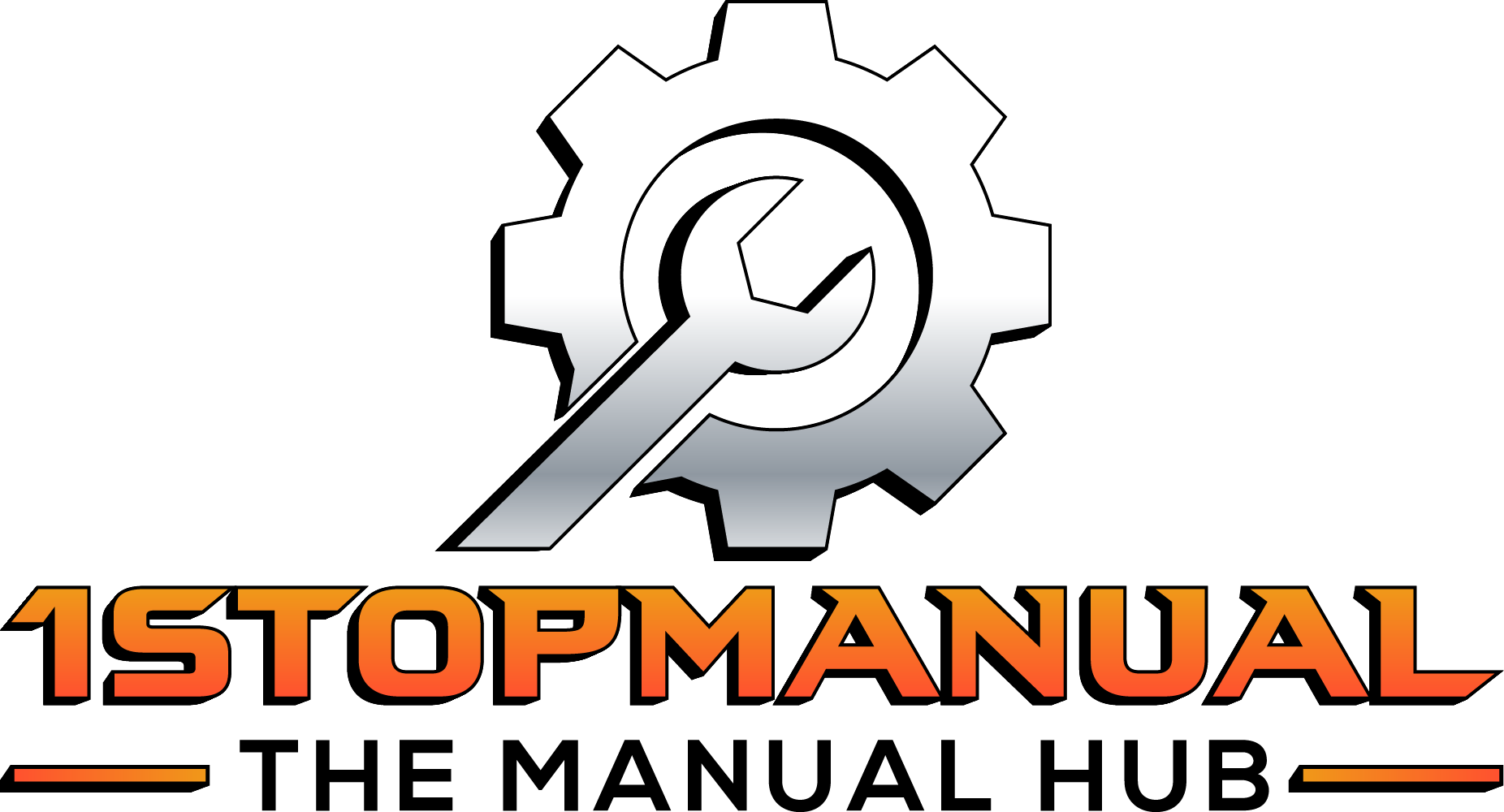Repair manuals are instruction books that help you fix things. These manuals explain how different parts of equipment work and how to take them apart, repair them, and put them back together. Whether it's a truck, forklift, a ATV, Outboard, Engine, Transmission, or even a car, repair manuals give a simple step-by-step directions to solve problems.
These manuals are important because they save you time and money. Instead of calling a repair service for every small issue, you can try to fix it yourself. According to a survey by Consumer Reports, people who do their own repairs save up to 30% on maintenance costs. That’s a big amount over time!
Many manufacturers provide manuals, and websites like 1StopManual.com offer manuals for different brands and models.
The goal of this blog is to help you understand how to use repair manuals. We'll guide you on how to read them, find the right section, and follow instructions.
What is a Repair Manual?
A repair manual is a book or guide that tells you how to fix and setup something. It explains how the equipment works, what parts it has, and how to repair or replace those parts. Think of it like a recipe book, but for machines and tools.
There are different types of manuals:
-
User Manuals – Show you how to use the equipment safely.
-
Service Manuals – Give detailed steps to repair or service the machine.
-
Parts Manuals – List all the parts with diagrams, so you know how things fit together.

Repair manuals are available for many types of equipment, such as:
-
Vehicles – Cars, motorcycles, tractors, and forklifts.
-
Machinery – Construction tools, factory machines, and farm equipment.
No matter the size or type of equipment, repair manuals help keep it working properly.
Why Use a Repair Manuals?
Using a repair manual can save you from making costly mistakes. If you try to fix something without the right steps, you might break it even more. The manual shows exactly how to do the repair correctly.
Here’s why repair manuals are helpful:
-
Prevents Mistakes – Following the manual ensures you don’t miss any important steps.
-
Helps with Troubleshooting – If something isn’t working, the manual lists common problems and how to fix them.
-
Extends Equipment Life – Regular maintenance from the manual keeps your equipment running longer.
-
Reduces Downtime – When equipment breaks, quick repairs mean you can get back to work faster.
By using a repair manual, you not only fix problems but also help your equipment last longer and work better.

How to Read and Understand a Repair Manual
Reading a repair manual might seem hard at first, but it gets easier once you know what to look for. Here’s a simple guide to help you understand and use the manual the right way.
1. Start with the Table of Contents
The table of contents is like a map for the manual. It lists all the sections and pages where you can find important information.
-
Look for the problem or part you need help with. For example, if your equipment’s engine won’t start, find the “Engine Troubleshooting” or “Starting Problems” section.
-
Jump to the right section without reading the entire manual. This saves time and helps you fix things faster.
2. Understand Symbols and Diagrams
Most repair manuals have symbols and pictures to explain the steps. These make it easier to see how parts fit together.
-
Common Symbols:
-
⚙️ – Gears or mechanical parts
-
🔧 – Use a wrench or tool
-
🛠️ – Maintenance or repair step
-
⚡ – Electrical wiring or power section
-
-
Diagrams show what the inside of the equipment looks like. Parts are usually labeled with numbers or letters, which match the parts list in the manual.
Tip: If a symbol is confusing, check the legend or key at the start of the manual. This explains what each symbol means.
Follow Step-by-Step Instructions
Repair manuals give instructions in small steps, so you don’t get overwhelmed.
-
Read all the steps first before starting the repair. This helps you understand the process and avoid mistakes.
-
Follow the order of the steps. Skipping steps can lead to bigger problems or damage.
-
Take your time. Don’t rush, and double-check your work as you go.
Use the Parts List
At the back or in the middle of the manual, there’s usually a parts list. This list shows:
-
The names of each part.
-
Part numbers (useful if you need to order replacements).
-
Tools you’ll need to do the repair.
Why the parts list is helpful:
-
Identify missing or broken parts that need replacing.
-
Order the correct parts without guessing.
-
Prepare tools before starting the repair. This saves time and keeps everything organized.
Keep the manual nearby when working. If you get stuck, read the instructions again or check the diagrams. The manual is there to guide you, so use it as much as you need!
Common Sections in a Repair Manuals
Repair manuals are organized in a way that makes it easy to find the information you need. Each section has a different purpose, guiding you from safety checks to full repairs.
Here’s a breakdown of the most common sections you’ll find:
Introduction and Safety Guidelines
This is the first section in most manuals. It explains important safety rules to follow before you begin any repair.
-
Why it matters:
-
Keeps you safe while working with heavy equipment or electrical parts.
-
Helps you avoid damaging the equipment by using the wrong tools or methods.
-
-
What you’ll find:
-
Warnings about sharp parts, hot surfaces, and electrical hazards.
-
Tips like wearing gloves, turning off power, or using eye protection.
-
Tip: Always read this part, even if you’ve repaired equipment before. Safety rules can change depending on the equipment model.
Troubleshooting Guide
This section helps you figure out what’s wrong with your equipment.
-
How it works:
-
Lists common problems (like “Engine Won’t Start” or “Strange Noises”).
-
Offers possible causes and quick solutions.
-
-
Example:
-
Problem: The forklift won’t lift heavy loads.
-
Cause: Low hydraulic fluid.
-
Solution: Refill fluid to the correct level.
-
Tip: Start with troubleshooting if the equipment isn’t working. You might fix the issue without needing a full repair.
Maintenance Schedule
This section outlines when to perform regular maintenance to keep equipment in top shape.
-
Why it’s important:
-
Prevents breakdowns by catching small issues early.
-
Extends the life of the equipment.
-
-
What you’ll see:
-
Daily, weekly, and monthly tasks (like oil changes, tire checks, or filter cleaning).
-
Charts or calendars to track maintenance.
-
Tip: Follow this schedule closely. Regular maintenance saves money on big repairs later.
Diagrams and Parts List
This part shows what the equipment looks like inside and lists all the parts.
-
Why it’s helpful:
-
Diagrams help you understand how parts fit together.
-
The parts list gives part numbers, making it easier to order replacements.
-
-
What’s included:
-
Exploded views (pictures showing parts pulled apart for a better view).
-
Labeled parts and descriptions.
-
Tip: Use diagrams when reassembling equipment to make sure everything goes back in the right place.
Repair Steps
The most detailed part of the manual, this section walks you through repairs step by step.
-
What to expect:
-
Instructions for fixing common problems, from simple to complex.
-
Tool recommendations for each repair.
-
-
Example:
-
Step 1: Remove the panel by loosening screws.
-
Step 2: Disconnect the battery before handling wires.
-
Tip: Take your time and follow each step exactly. Missing a step can lead to further damage.
By knowing these sections, you can quickly find the information you need and complete repairs with confidence!

Tips for Using Repair Manuals Effectively
Repair manuals can save you time and money, but only if you use them the right way. Here are some simple tips to get the most out of your manual:
Always Follow Safety Instructions
-
Safety sections are there for a reason.
-
Before starting, double-check safety guidelines to avoid accidents.
-
Even small repairs can lead to injury if proper precautions aren’t taken.
Tip: If the manual suggests wearing gloves or goggles, make sure to follow that advice.
Use the Proper Tools
-
Each repair lists the tools you need. Using the wrong tool can damage parts.
-
Manuals often include a tool checklist to help you prepare.
Tip: If you don’t have a specific tool, consider borrowing or renting it instead of improvising.
Work Step by Step
-
Don’t skip steps, even if you think they aren’t important.
-
Manuals break down complex tasks into smaller steps for a reason.
-
Missing one step can cause problems later or result in incomplete repairs.
Tip: Take your time and mark each step as you complete it.
Keep the Manual Safe
-
Store physical manuals in a dry place, away from oil or dirt.
-
If the manual is digital, download a copy to your device for offline access.
Tip: Print out the most important sections and keep them near your workspace.
Download or Print a Copy
-
If your manual is online, download a PDF or print the sections you need.
-
Having a physical copy can be easier to handle during repairs.
Tip: Label the manual and keep it with the equipment for easy access.
Where to Find Repair Manuals
Not sure where to get a repair manual? Here are a few reliable sources:
Online Stores
-
Websites like 1StopManual.com specialize in repair manuals.
Tip: Compare prices and ensure the manual matches your exact equipment model.

Equipment Sellers or Distributors
-
If you bought your equipment from a distributor, they may have a manual.
-
Some sellers provide manuals as part of the purchase.
Tip: Ask about repair manuals when buying new or used equipment.
Forums and Repair Communities
-
Online forums and communities share manuals and troubleshooting tips.
-
Join forums related to your equipment type for advice and resources.
Tip: Be cautious with unofficial manuals and verify information from trusted sources.
Conclusion
Repair manuals are helpful, and they help you fix problems, maintain equipment, and save money. By following the tips and knowing where to find manuals, you can handle many repairs on your own.
Thank you for reading! If you need high-quality repair manuals, visit 1StopManual.com for a wide selection of guides. Good luck with your repairs!






